OcCre
are a specialist Company using state-of-the-art technology such as 3D
CAD, high resolution digital cameras and computer image processing to
produce incredibly detailed and lifelike scale models of trams and
trains, ships and buses for modellers to build and display. Their latest offering is of the HMS Revenge. An English race-built galleon of 46 guns which participated in several battles under Sir Francis Drake's command.
The Revenge comes in 1:85-Scale and measures just over 27″ long and
about 22.4″ high. This plank-on-bulkhead kit includes English
instructions, with step-by-step images of assembly, planking in sapelle,
walnut and lime wood. Fittings come in cast metal, wood, and turned
brass. It also includes a sewn sails set that just needs to be rigged.
The model is suitable for those with some experience of model making.
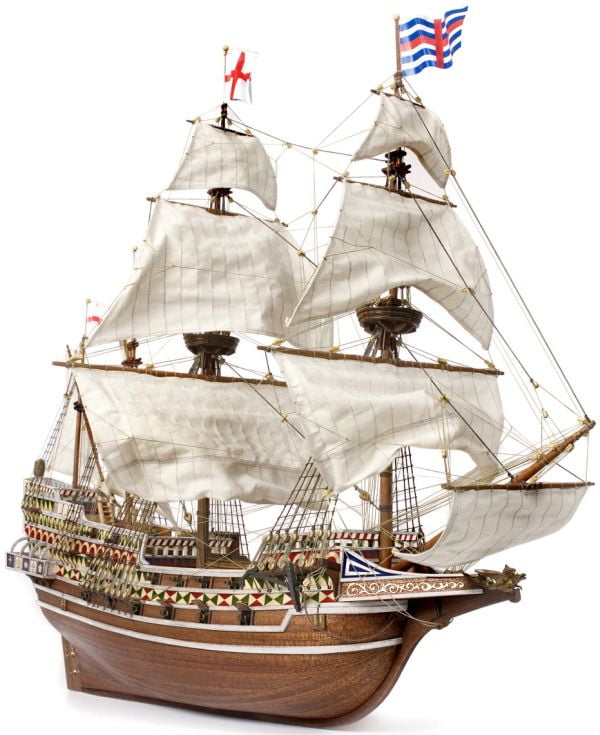
Ship’s history
HMS Revenge was an English galleon built by Sir John Hawkins in the shipyards of Deptford in 1577. The design had some special characteristics. The ratio between the length and the breadth was narrower, forecastle and stern castle smaller than typical galleons with low freeboard. These features provided better artillery stability. Under Sir Francis Drake's command participated in several battles.
As an integral 1590 Frobisher expedition against the Indian fleet, she was captured as war booty. A terrible storm sank Revenge on her trip to Spain.
The following excerpts taken from Wikipedia:
Revenge came to her end in a glorious but bizarre episode that has become a legend. In order to impede a Spanish naval recovery after the Armada, Sir John Hawkins proposed a blockade of the supply of treasure being acquired from the Spanish Empire in America by a constant naval patrol designed to intercept Spanish ships. Revenge, was on such a patrol in the summer of 1591 under the command of Sir Richard Grenville.
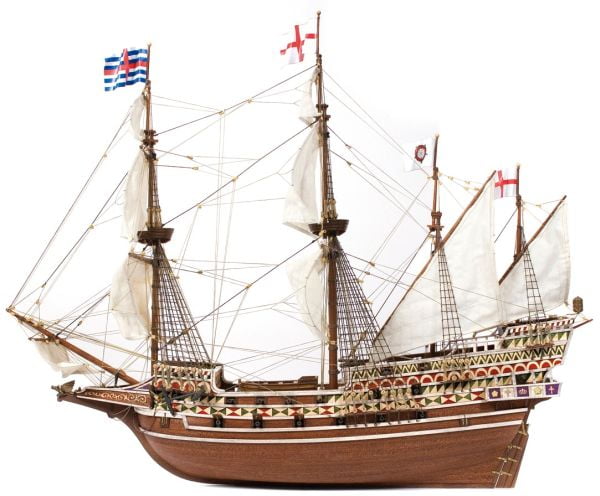
The Spanish had dispatched a fleet of some 53 ships under Alonso de Bazan, having under his orders Generals Martin de Bertendona and Marcos de Aramburu. Intent upon the capture of the English at Flores in the northern Azores. In late August 1591 the Spanish fleet came upon the English while repairs to the ships caused the crews, many of whom were suffering an epidemic of fever, to be ashore. Most of the ships managed to slip away to sea. Grenville who had many sick men ashore decided to wait for them. When putting to sea he might have gone round the west of Corvo island, but he decided to go straight through the Spaniards, who were approaching from the eastward.
The battle began late on 31 August, when overwhelming force was immediately brought to bear upon the ship, which put up a gallant resistance. For some time he succeeded by skillful tactics in avoiding much of the enemy's fire, but they were all round him and gradually numbers began to tell. As one Spanish ship retired beaten, another took her place, and for fifteen hours the unequal contest continued. Attempts by the Spaniards to board were driven off. San Felipe, a vessel three times her size, tried to come alongside for the Spaniards to board her, along with Aramburu's San Cristóbal. After boarding Revenge, San Felipe was forced to break off. Seven men of the boarding party died, and other three where rescued by San Bernabé, which grappled her shortly after. The Spanish also lost the galleon Ascensión and a smaller vessel by accident that night, after they collided each other. Meanwhile, San Cristóbal, which had come to help San Felipe, rammed Revenge underneath her aftcastle, and some time later, Bertendona's San Bernabé battered the English warship with heavy fire, inflicting many casualties and severe damage. The English crew returned fire from the embrasures below deck. When morning broke on 1 September, Revenge lay with her masts shot away, six feet of water on the hold and only sixteen men left uninjured out of a crew of two hundred and fifty. She remained grappled by the galleons San Bernabé and San Cristóbal, the latter with her bow shattered by the ramming. The grappling manoeuvre of San Bernabé, which compelled the English gun crews to abandon their posts in order to fight off boarding parties, was decisive in securing the fate of the Revenge.
"Out-gunned, out-fought, and out-numbered fifty-three to one", when the end looked certain Grenville ordered Revenge to be sunk: "Sink me the ship, Master Gunner—sink her, split her in twain! ... Fall into the hands of God, not into the hands of Spain! ". His officers could not agree with this order and a surrender was agreed by which the lives of the officers and crew would be spared. After an assurance of proper conduct, and having held off dozens of Spanish ships, Revenge at last surrendered. The injured Grenville died of wounds two days later aboard the Spanish flagship.
The captured but heavily damaged Revenge never reached Spain, but was lost with her mixed prize-crew of 70 Spaniards and English captives, along with a large number of the Spanish ships in a dreadful storm off the Azores. The battle damaged Revenge was cast upon a cliff next to the island off Terceira, where she broke up completely. Between 1592 and 1593, 14 guns of the Revenge were recovered by the Spanish from the site of the wreck. Other cannons were driven ashore years later by the tide, and the last weapons raised were salvaged as late as 1625
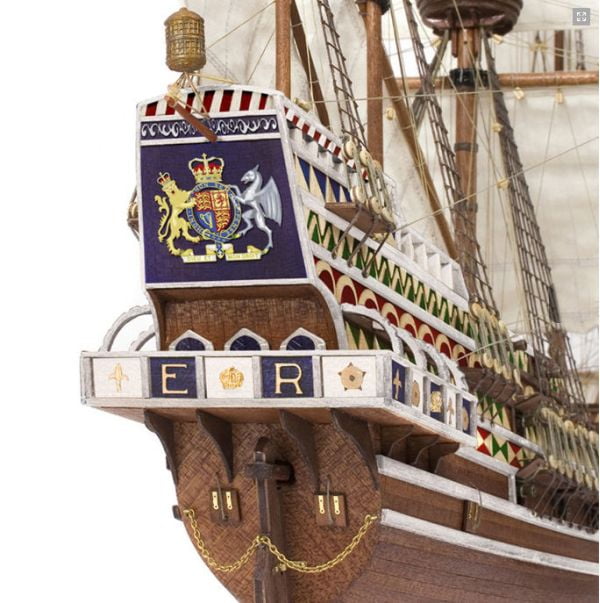
Her final action inspired a popular poem entitled The Revenge: A Ballad of the Fleet by Lord Tennyson , which dramatically narrates the course of the engagement.
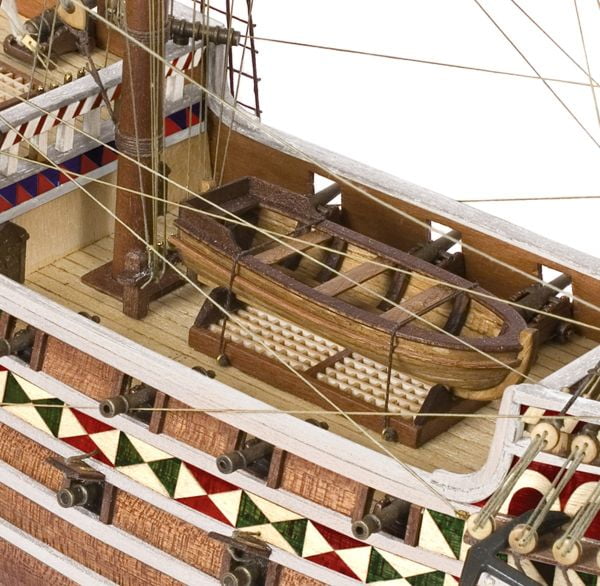
The model is suitable for those with some experience of model making.

Ship’s history
HMS Revenge was an English galleon built by Sir John Hawkins in the shipyards of Deptford in 1577. The design had some special characteristics. The ratio between the length and the breadth was narrower, forecastle and stern castle smaller than typical galleons with low freeboard. These features provided better artillery stability. Under Sir Francis Drake's command participated in several battles.
As an integral 1590 Frobisher expedition against the Indian fleet, she was captured as war booty. A terrible storm sank Revenge on her trip to Spain.
The following excerpts taken from Wikipedia:
Revenge came to her end in a glorious but bizarre episode that has become a legend. In order to impede a Spanish naval recovery after the Armada, Sir John Hawkins proposed a blockade of the supply of treasure being acquired from the Spanish Empire in America by a constant naval patrol designed to intercept Spanish ships. Revenge, was on such a patrol in the summer of 1591 under the command of Sir Richard Grenville.

The Spanish had dispatched a fleet of some 53 ships under Alonso de Bazan, having under his orders Generals Martin de Bertendona and Marcos de Aramburu. Intent upon the capture of the English at Flores in the northern Azores. In late August 1591 the Spanish fleet came upon the English while repairs to the ships caused the crews, many of whom were suffering an epidemic of fever, to be ashore. Most of the ships managed to slip away to sea. Grenville who had many sick men ashore decided to wait for them. When putting to sea he might have gone round the west of Corvo island, but he decided to go straight through the Spaniards, who were approaching from the eastward.
The battle began late on 31 August, when overwhelming force was immediately brought to bear upon the ship, which put up a gallant resistance. For some time he succeeded by skillful tactics in avoiding much of the enemy's fire, but they were all round him and gradually numbers began to tell. As one Spanish ship retired beaten, another took her place, and for fifteen hours the unequal contest continued. Attempts by the Spaniards to board were driven off. San Felipe, a vessel three times her size, tried to come alongside for the Spaniards to board her, along with Aramburu's San Cristóbal. After boarding Revenge, San Felipe was forced to break off. Seven men of the boarding party died, and other three where rescued by San Bernabé, which grappled her shortly after. The Spanish also lost the galleon Ascensión and a smaller vessel by accident that night, after they collided each other. Meanwhile, San Cristóbal, which had come to help San Felipe, rammed Revenge underneath her aftcastle, and some time later, Bertendona's San Bernabé battered the English warship with heavy fire, inflicting many casualties and severe damage. The English crew returned fire from the embrasures below deck. When morning broke on 1 September, Revenge lay with her masts shot away, six feet of water on the hold and only sixteen men left uninjured out of a crew of two hundred and fifty. She remained grappled by the galleons San Bernabé and San Cristóbal, the latter with her bow shattered by the ramming. The grappling manoeuvre of San Bernabé, which compelled the English gun crews to abandon their posts in order to fight off boarding parties, was decisive in securing the fate of the Revenge.
"Out-gunned, out-fought, and out-numbered fifty-three to one", when the end looked certain Grenville ordered Revenge to be sunk: "Sink me the ship, Master Gunner—sink her, split her in twain! ... Fall into the hands of God, not into the hands of Spain! ". His officers could not agree with this order and a surrender was agreed by which the lives of the officers and crew would be spared. After an assurance of proper conduct, and having held off dozens of Spanish ships, Revenge at last surrendered. The injured Grenville died of wounds two days later aboard the Spanish flagship.
The captured but heavily damaged Revenge never reached Spain, but was lost with her mixed prize-crew of 70 Spaniards and English captives, along with a large number of the Spanish ships in a dreadful storm off the Azores. The battle damaged Revenge was cast upon a cliff next to the island off Terceira, where she broke up completely. Between 1592 and 1593, 14 guns of the Revenge were recovered by the Spanish from the site of the wreck. Other cannons were driven ashore years later by the tide, and the last weapons raised were salvaged as late as 1625

Her final action inspired a popular poem entitled The Revenge: A Ballad of the Fleet by Lord Tennyson , which dramatically narrates the course of the engagement.

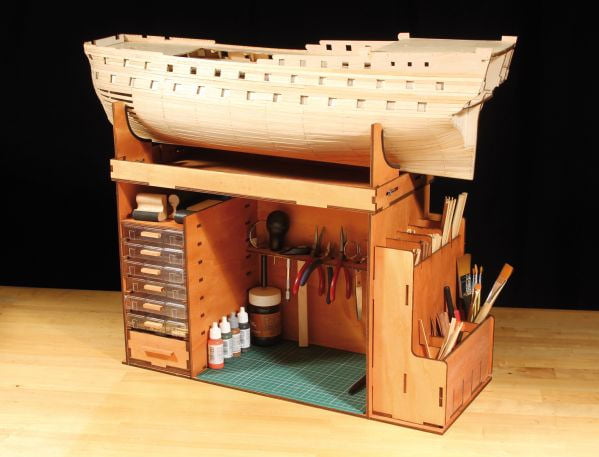
No comments :
Post a Comment